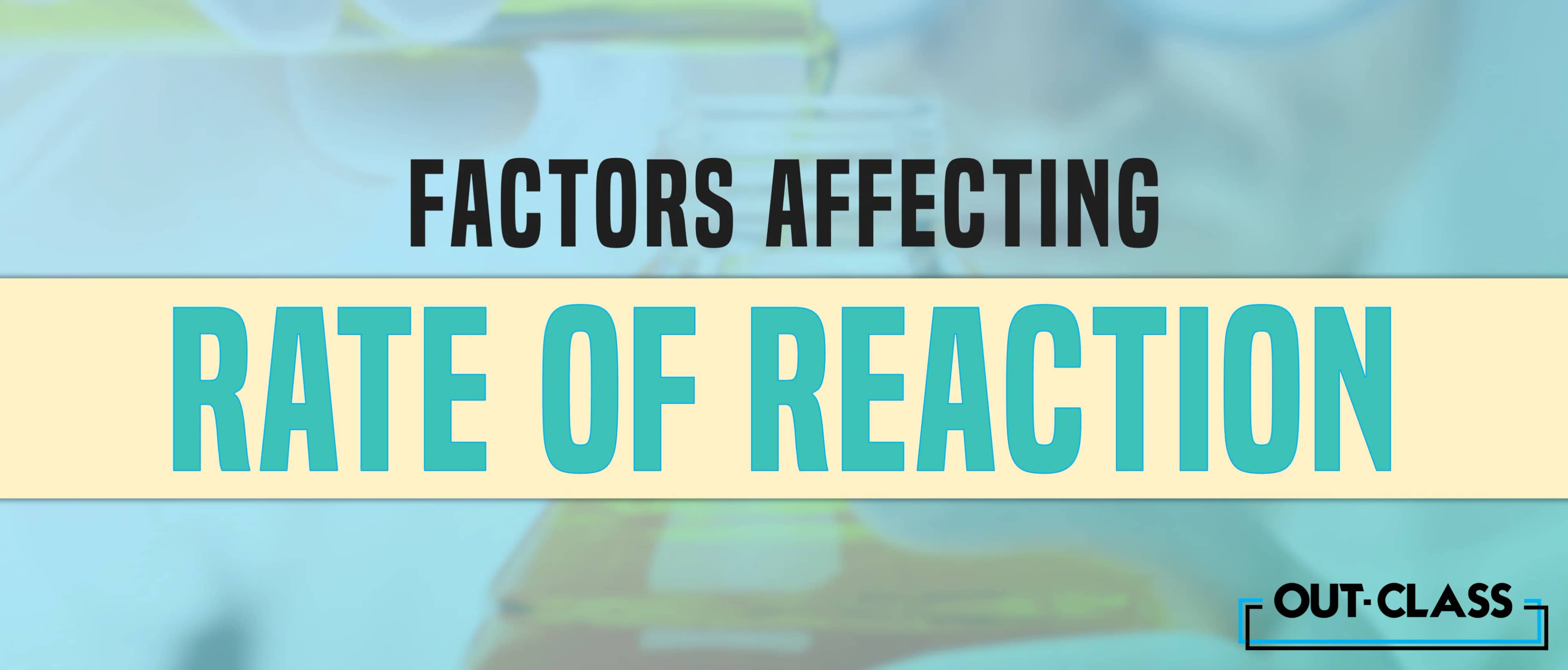Rate of reaction is a key concept in O Level and IGCSE Chemistry because it identifies how fast a chemical reaction progresses. But what are the factors affecting the rate of reaction in chemical kinetics? Let’s find out!
Key Factors That Impact Reaction Rate
When asked to identify the factors affecting the rate of reaction, ensure you mention these crucial elements:
-
Concentration of Solutions
-
Pressure of Gases
-
Surface Area of Solids
-
Catalysts
Factors Affecting Rate of Reaction in Chemical Kinetics
To comprehend the factors influencing the rate of reaction in IGCSE and O Level Chemistry, one must delve into reaction kinetics (how particles involved in a reaction behave).
Concentration of Solutions & Pressure of Gases
Increasing the concentration of a solution or raising the pressure of a gas elevates the number of particles in a given volume, leading to more frequent collisions between reactants and faster reaction progression.
Surface Area of Solids
Increasing surface area exposes more reactant particles, thereby increasing the reaction rate.
Temperature
A higher temperature provides particles with more energy. The more energetic the collisions are, the more particles can overcome activation energy and as a result, increase the reaction rate.
Catalysts
Catalysts mediate reactions and usually increase the rate of reaction by lowering the activation energy of the chemical pathway.
Factors Affecting Rate of Reaction with Examples
If you are asked to explain the factors affecting the rate of reaction in your O Level & IGCSE Chemistry exam, you can use these examples to get your point across!
Consider the reaction between marble chips (calcium carbonate) and hydrochloric acid to produce carbon dioxide gas:
Surface Area:
Using powdered marble increases the surface area compared to larger chips, leading to more frequent collisions and a faster reaction rate.
Concentration of Acid:
Increasing the concentration of hydrochloric acid increases the number of particles in the same volume, leading to more frequent collisions and a faster rate of reaction.
Temperature:
Heating the mixture raises the kinetic energy of the reacting particles, causing more frequent and energetic collisions, thus speeding up the reaction.
Conclusion
In conclusion, the factors affecting the rate of reaction in IGCSE/O Level Chemistry include concentration, pressure, surface area, temperature, and catalysts.
We at Out-Class understand that the IGCSE & O Level Chemistry syllabus and past papers are lengthy and tough to revise effectively. Luckily, our online IGCSE & O Level crash course is a hassle-free way to prepare before your exams. So don't miss out and explore it!
FAQs:
Q. How does the concentration of solutions affect the rate of reaction?
An increase in the concentration of solutions leads to more particles in a given volume, resulting in more frequent collisions between reactants. This increased collision frequency enhances the rate of reaction.
Q. Why does the surface area of solids impact the rate of reaction?
Increasing the surface area of solids exposes more reactant particles, allowing for a greater number of collisions with other reactants. This leads to a faster reaction rate.
Q. How does temperature influence the rate of reaction?
Higher temperatures provide particles with more energy, increasing their kinetic energy. This higher energy enables more frequent and energetic collisions between particles, thereby accelerating the rate of reaction.
Q. What role do catalysts play in affecting the rate of reaction?
Catalysts lower the activation energy required for a chemical reaction to proceed. By reducing the energy barrier, catalysts facilitate faster reaction rates without being consumed in the process.



